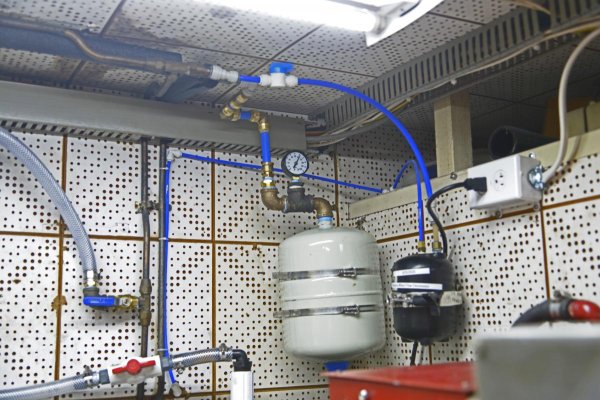Transaxial
Senior Member
My T&P (Relief Valve - RV) has leaked excessively since day 1. These RV’s need time to seat, so the manual says some leakage in the beginning is normal. Didn’t stop, and by that I mean it will fill up a 16 oz container in about 3 days – too much.
I therefore replaced the relief valve about 1.5 years ago thinking it may be bad. No improvement.
There is no way to turn my heat input down.
My engine coolant is plumbed to the hot water heater on a loop, but that doesn’t cause the issue. It’s when its supplied by the electrical side (shore or Gen) when the RV lifts the most.
I was told (second hand from the hot water heater manufacturer) one method to prevent the RV from constantly lifting is by plumbing in an accumulator on the hot side. But, as others have noted, and I learned this myself on some websites yesterday after my initial post, it does not appear these accumulators are designed for hot water and should be plumbed in to the cold side. Installing an accumulator helps with other things like constant pump cycling for small faucet draws, but it would not solve my problem I now know, which is also confirmed by the replies on this thread.
One more thing – it appears code criteria for boats concerning hot water heater relief valves has changed. These heaters are now required to have 100 psi relief valves, where on shoreside (similar rated T/P heater units) they are 150 psi. The manufacturer doesn’t note the MAWP on my heater plate, by design I assume because less is more. I think I just figured out the solution.
I think you are on the right track but just overthinking the expansion of the hot water from either electric heat or from the engine heat loop. The hot water in the system expands when heated. That is normal and is a very small volume. Liquid is not compressible though. The hot water tank should be full so there is no air anywhere in the system to compress so a very small amount of heat expansion causes considerable pressure rise, which causes the relief valve to weep. By adding a $30-40 bladder tank between the cold inlet to the hot water tank and pressure supply pump you accomplish two things. 1/ You provide an outlet for a very small volume of water caused from heat expansion at a negligible change in pressure in the bladder tank. Any hot water moving from the hot water tank to the bladder would be insignificant but prevent a pressure spike on the otherwise closed system. 2/ The expansion tank greatly reduces pump cycling for both hot and cold water usage, which is a very nice feature.
I also plumbed a temperature regulating valve for domestic water coming off the hot water tank because that water is dangerously hot at engine temp of 180-195 degrees when the engine has been running. These can be set to 125-135 degrees F so as not to scald an unsuspecting water user. With 180 degree water in your 10 gallon hot water tank, you get considerably more shower temp water when mixed. That little bladder in my system has made all the difference in many ways, for the better.

